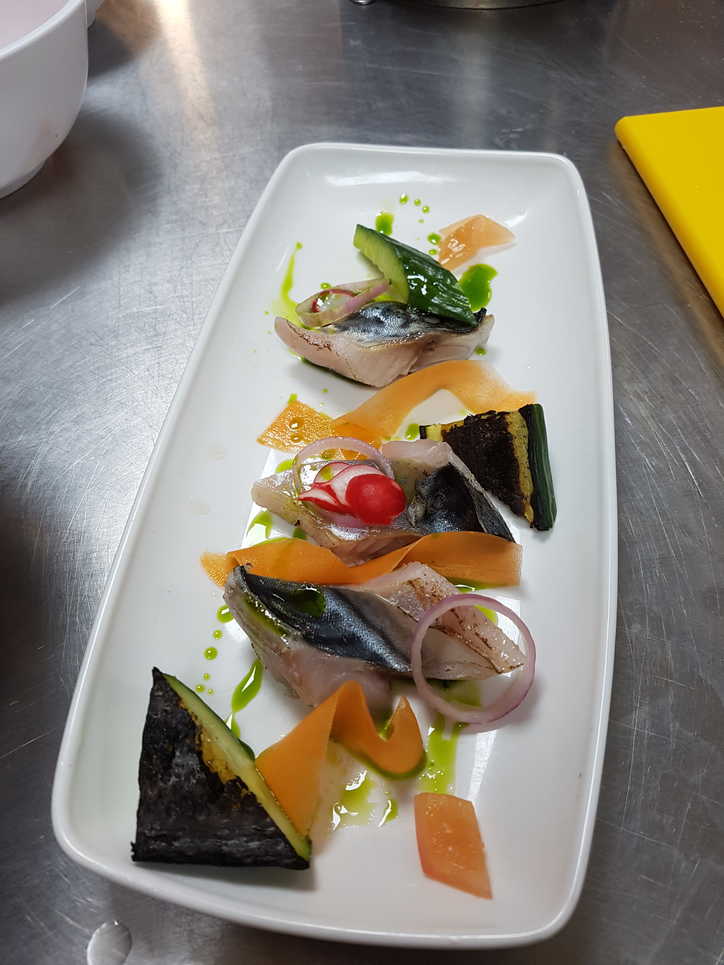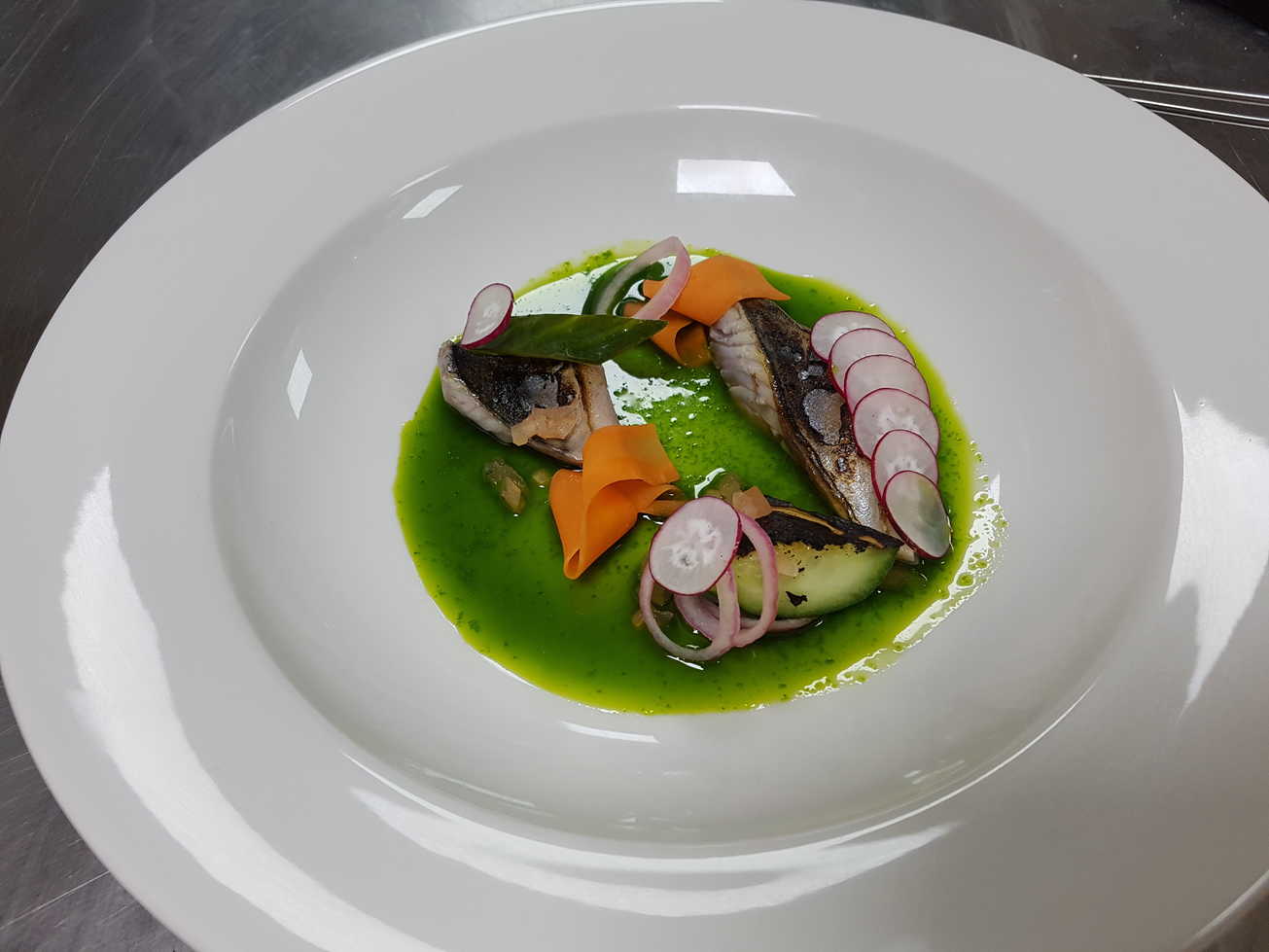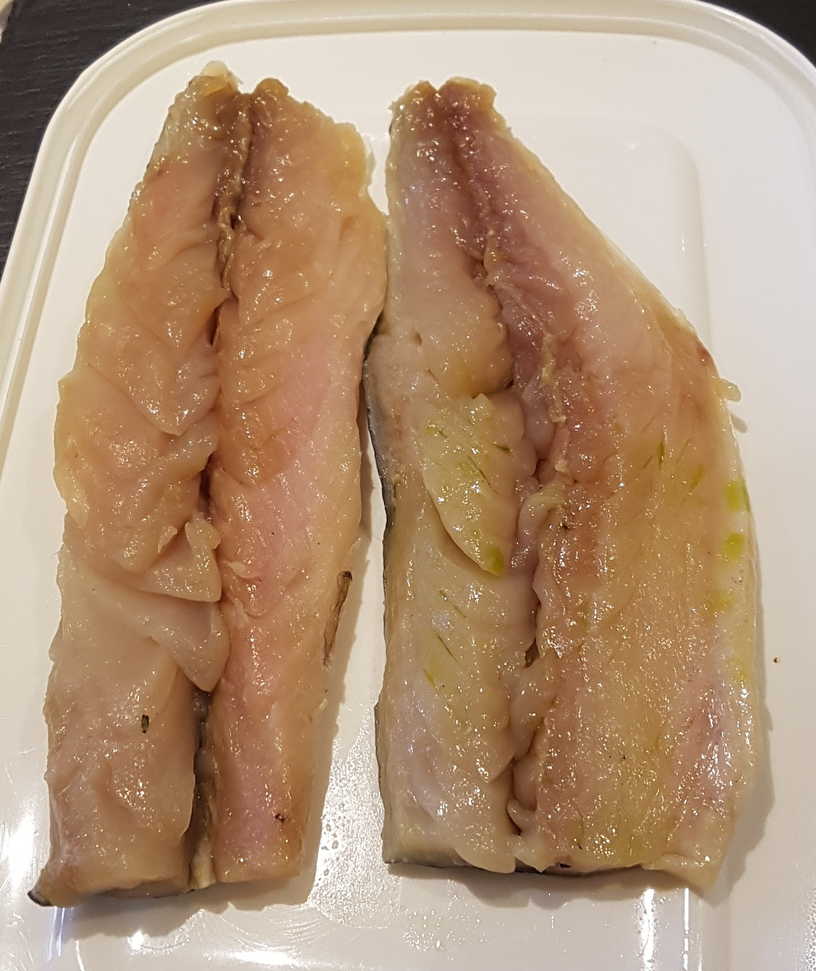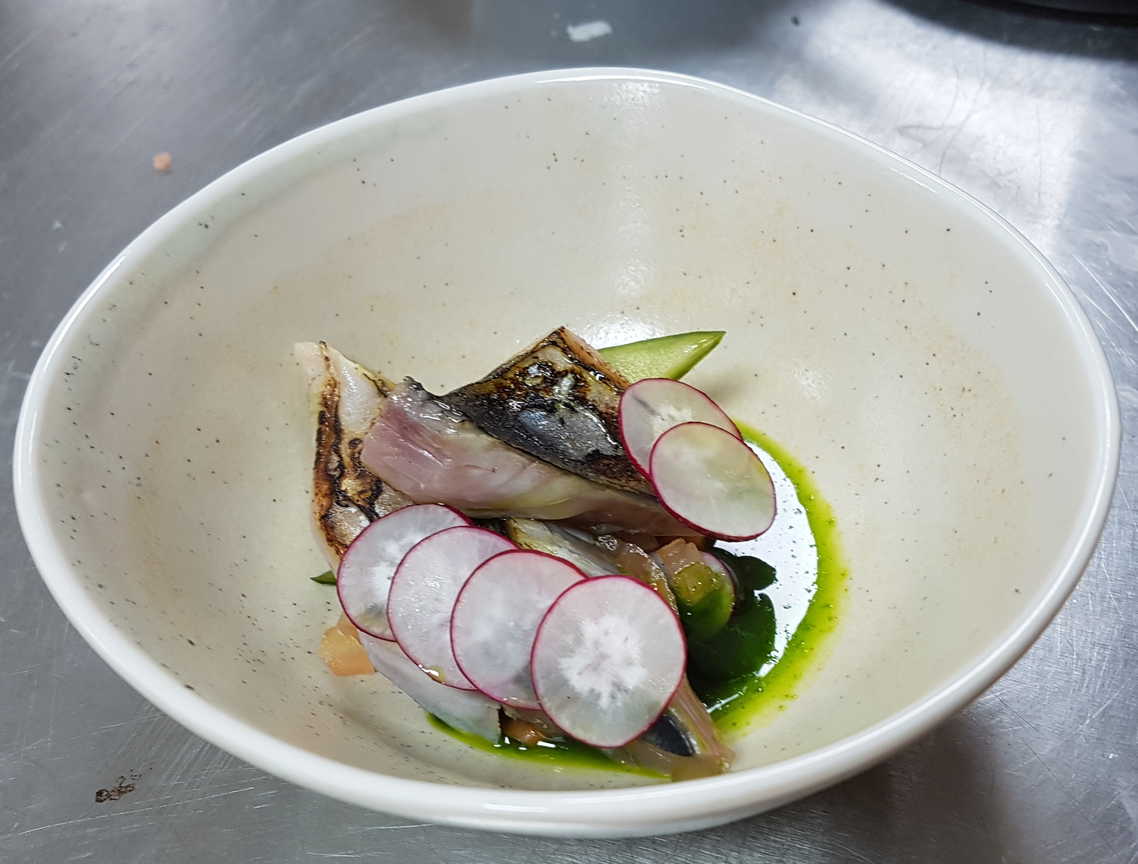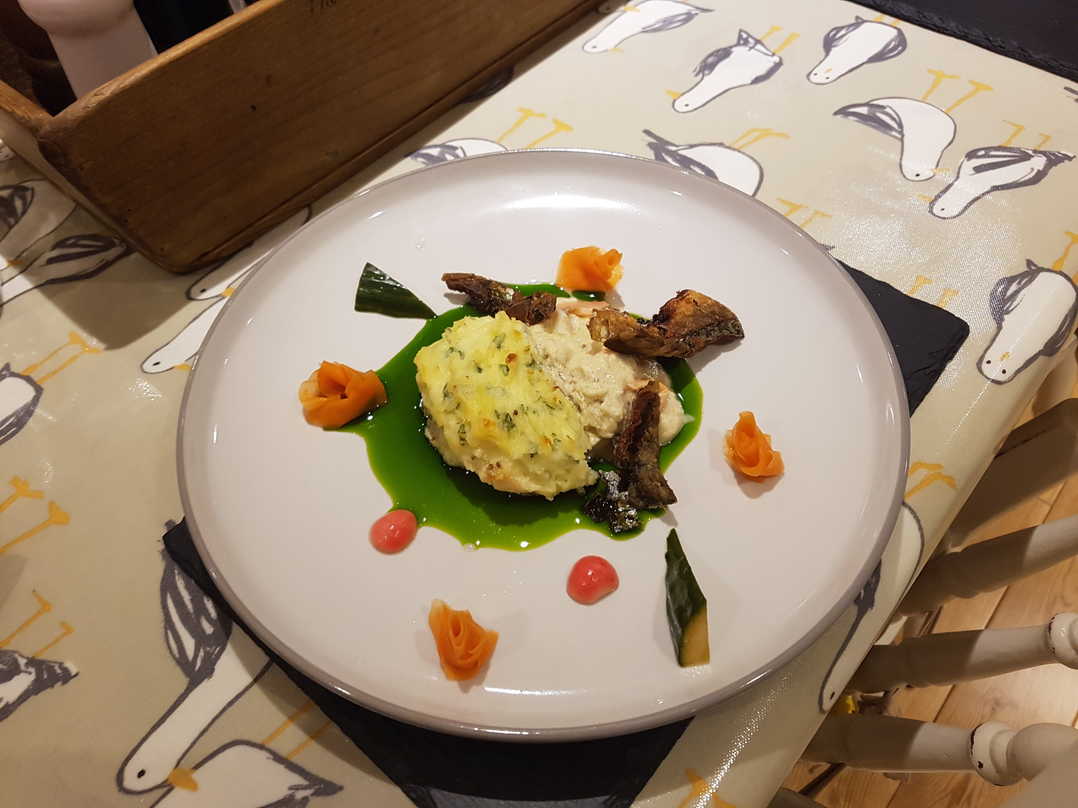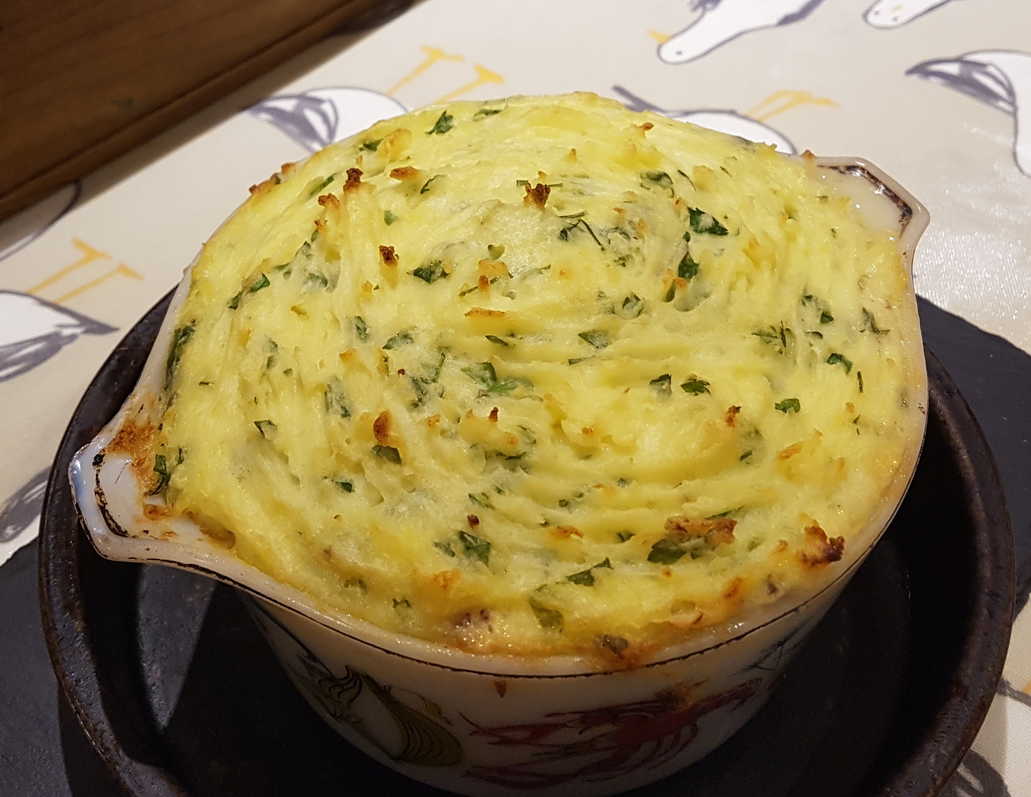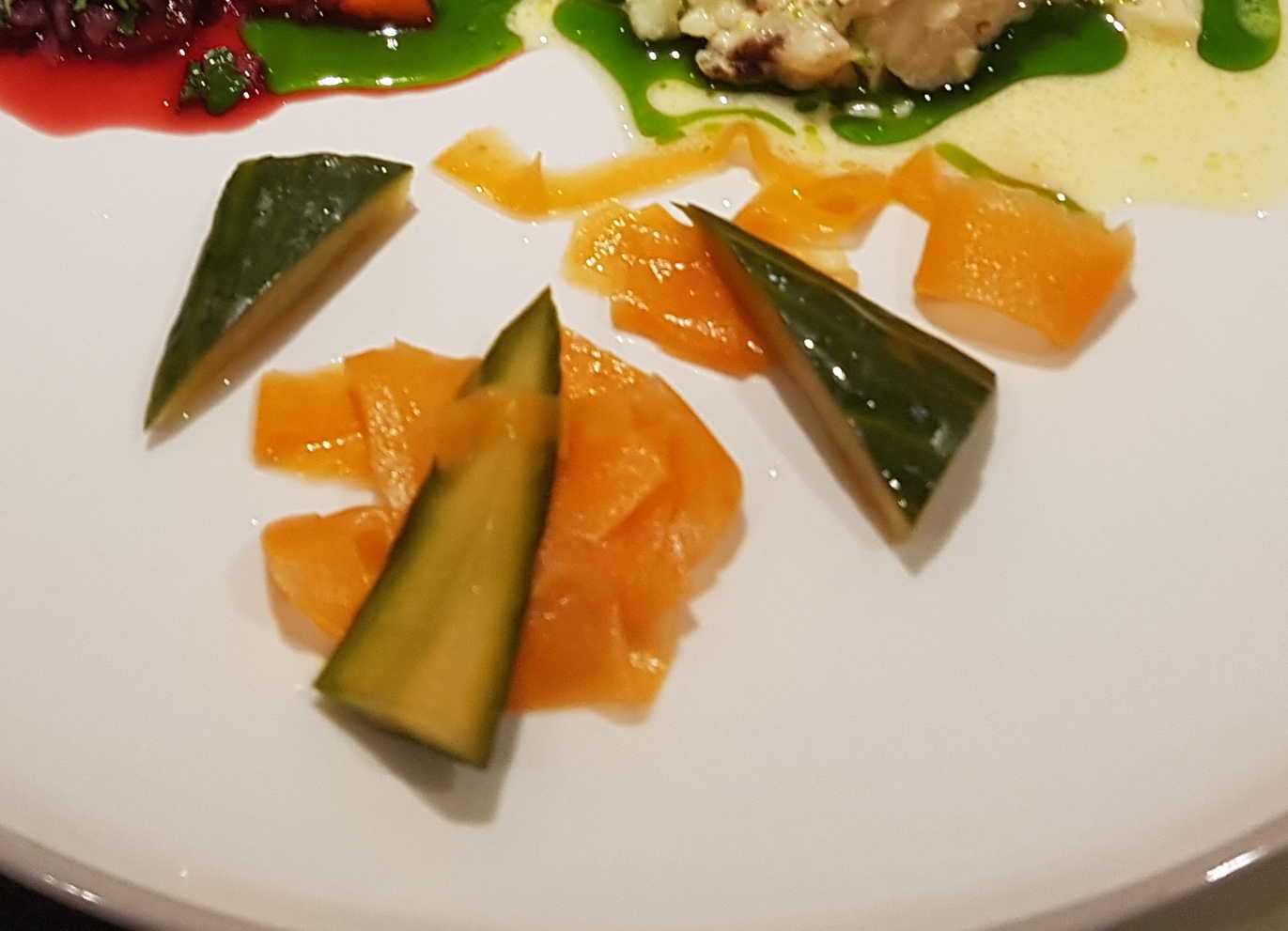
Culinary Masterclass - Fish Cure
What do you do when life gives you a glut (teem?) of mackerel?
Make Mackerel Parmentier:
Antoine Parmentier was a mad 18th Century French physician who earnestly believed in the life-giving health properties of a magical new vegetable from the Americas - the potato.
His name is now a general term for any dish containing or involving potatoes. Especially if the contents have a mashed potato topping.
Even if they're mackerel.
Before that, though, you should cure some and scoff them almost raw...
Make Mackerel Parmentier:
Antoine Parmentier was a mad 18th Century French physician who earnestly believed in the life-giving health properties of a magical new vegetable from the Americas - the potato.
His name is now a general term for any dish containing or involving potatoes. Especially if the contents have a mashed potato topping.
Even if they're mackerel.
Before that, though, you should cure some and scoff them almost raw...
menu
Fish Cure
Quick Cured Mackerel Fillets
For the Leftovers
Mackerel Parmentier
Quick Cured Mackerel Fillets
Salt & Sugar cured. Then blow-torched, to teach it a lesson.
Pickled Vegetables
A sharp contrast to the oily fish.
Herb Oil
Vivid green vegetable blood.
For the Leftovers
Mackerel Parmentier
Mackerel cottage pie. If you have more mackerel which needs concealing.
Quick Cured Mackerel
fish main
This quick salt cure draws moisture from the fish while seasoning it, leaving the flesh lighter in colour and firmer in texture.
You can add ground spices like fennel or coriander to the cure too, if you like.
Mackerel skin has a thin papery covering which is best peeled off, when serving pickled or cured.
Here, the blow-torching burns much of it away, but I think it contributes to the fish's tendency to curl up by tightening when scorched, so if I were you I'd remove it anyway before curing - start at the head end of the fillet, tease up a corner of the membrane like a sticker, then peel it away from the rest of the fillet.
Mackerel skin has a thin papery covering which is best peeled off, when serving pickled or cured.
Here, the blow-torching burns much of it away, but I think it contributes to the fish's tendency to curl up by tightening when scorched, so if I were you I'd remove it anyway before curing - start at the head end of the fillet, tease up a corner of the membrane like a sticker, then peel it away from the rest of the fillet.
Serves 2
Ingredients
- 1 whole mackerel, filleted
- 200g salt
- 50g sugar
There are two basic ways of filleting the mackerel - by removing the fillets from the intact body, or by gutting, trimming and then halving the fish.
The former method is obviously easier and quicker, but it does risk leaving a quantity of the fillet on the carcass: Slice down into the fillet behind the mackerel's head until you meet the spine, then turn the filleting knife and run it along the spine to the releasing the entire fillet. Turn the fish over and repeat.
Done.
Alternatively first gut the fish - slicing open the belly and washing out all the innards. Trim the stubby side and back fins with shears or heavy scissors. Lay the fish on its side, slice down vertically behind the head of the fish and in front of the tail. Now cut horizontally with a filleting knife along the centreline of the back of the fish down to the spine, then continue cutting and scraping away towards the belly of the fish until you have released the entire top fillet from the skeleton. Turn the fish over and repeat.
Tidy the fillets edges, remove the fatty white belly areas which will be largely inedible and cut or pull away any bones.
Skin side down, place the prepared fillets on a tray. Rub the flesh with the salt and sugar mixture and cover tightly with cling film. Place in the fridge for 30 mins.
After 30 mins, remove from the fridge and wash away the cure with cold water. Thinly slice or halve into segments at an angle with a chefs knife before blow torching and serve.
The former method is obviously easier and quicker, but it does risk leaving a quantity of the fillet on the carcass: Slice down into the fillet behind the mackerel's head until you meet the spine, then turn the filleting knife and run it along the spine to the releasing the entire fillet. Turn the fish over and repeat.
Done.
Alternatively first gut the fish - slicing open the belly and washing out all the innards. Trim the stubby side and back fins with shears or heavy scissors. Lay the fish on its side, slice down vertically behind the head of the fish and in front of the tail. Now cut horizontally with a filleting knife along the centreline of the back of the fish down to the spine, then continue cutting and scraping away towards the belly of the fish until you have released the entire top fillet from the skeleton. Turn the fish over and repeat.
Tidy the fillets edges, remove the fatty white belly areas which will be largely inedible and cut or pull away any bones.
Aaron cuts away the pin bones left along the line of the mackerel's spine, rather than painstakingly removing them individually with tweezers.
It's a quicker, but more brutal method - you have to excise a v-shaped notch of flesh practically down to the skin.
It also leads to the problem of the fillet now wanting to fold itself up along this groove, say if you blow-torch the skin side.
Combine together the salt and sugar mix.Skin side down, place the prepared fillets on a tray. Rub the flesh with the salt and sugar mixture and cover tightly with cling film. Place in the fridge for 30 mins.
After 30 mins, remove from the fridge and wash away the cure with cold water. Thinly slice or halve into segments at an angle with a chefs knife before blow torching and serve.
An excellent way of serving fresh mackerel.
It seems best to begin the scorching process by holding the torch directly above the centre of the fillet and blasting away without moving it until the skin begins to blister nicely. After that you can run the flame along the edges of the fillet to colour it nicely everywhere.
This will limit the degree to which the fish tries to roll itself up like a cigar.
It seems best to begin the scorching process by holding the torch directly above the centre of the fillet and blasting away without moving it until the skin begins to blister nicely. After that you can run the flame along the edges of the fillet to colour it nicely everywhere.
This will limit the degree to which the fish tries to roll itself up like a cigar.
Pickled Vegetables
side salad veg vegan
Feel free to use any vegetables you like.
Aaron also charred some cucumber halves Aaron likes charring things to use as garnish. Don't add them to the pickle though.
Tomato concassé is chopped peeled, de-seeded tomato flesh. Cut them into strips or lozenge shapes for decoration, but don't pickle them either.
Aaron also charred some cucumber halves Aaron likes charring things to use as garnish. Don't add them to the pickle though.
Tomato concassé is chopped peeled, de-seeded tomato flesh. Cut them into strips or lozenge shapes for decoration, but don't pickle them either.
Ingredients
For the Pickle:- 100ml water
- 200ml white wine vinegar
- 2 tblsp peppercorn
- 4 bay leaves
Vegetables:- radish, thinly sliced
- ½ cucumber, core removed, bias cut
- 1 carrot, peeled into ribbons
- 1 shallot
Garnish:- tomato concassé
Prepare all the vegetables and set aside for pickling.
Bring the pickle liquor to the boil.
Allow to cool slightly then pour over the vegetables except for the tomato garnish!.
Cover with cling film and set aside for use when serving.
Bring the pickle liquor to the boil.
Allow to cool slightly then pour over the vegetables except for the tomato garnish!.
Cover with cling film and set aside for use when serving.
The pickle is best used whilst still hot, but not quite boiling.
The radish gets a rather sickly bleached look to it - so it's probably better not to pickle those.
The other vegetables are fine though - except the peeled, de-seeded, lozenges of tomato flesh - use them for garnish as they are.
The radish gets a rather sickly bleached look to it - so it's probably better not to pickle those.
The other vegetables are fine though - except the peeled, de-seeded, lozenges of tomato flesh - use them for garnish as they are.
Herb Oil
sauce veg vegan salad
The refreshing stage should result in a brightly coloured oil.
It's best to allow plenty of time for the final straining - just let the oil drip through the cloth - don't press it or it will be cloudy.
It's best to allow plenty of time for the final straining - just let the oil drip through the cloth - don't press it or it will be cloudy.
Makes 200ml
Ingredients
- handful of chives, parsley, dill sage, tarragon, basil, thyme leaves...
- 200ml oil
- pinch of salt, or to taste
Place a pan on to boil.
Add all the herbs and salt and blanch for 30 seconds.
Remove from the pan and refresh under cold or iced water.
Add the herbs with the oil to a blender.
Strain through a muslin cloth or sieve.
Add all the herbs and salt and blanch for 30 seconds.
Remove from the pan and refresh under cold or iced water.
Add the herbs with the oil to a blender.
Strain through a muslin cloth or sieve.
Pretty tasty oil.
Don't keep it for too long - a few days in the fridge at most, though hopefully the boil will have killed off any murderous bacteria!
Don't keep it for too long - a few days in the fridge at most, though hopefully the boil will have killed off any murderous bacteria!
Mackerel Parmentier
fish main cheese
Like a fishy cottage or shepherd's pie.
The cream cheese sauce is in fact quite effective at softening the otherwise strongly oily flavour of the mackerel - handy if you inexplicably end up with large quantities of mackerel to disguise.
Yumsk!
Maybe you could leave the skin on the mackerel to make this, but I skinned mine. Of course the recipe is intended to be made with fresh mackerel, but I used salt-cured fillets.
It didn't seem to do any harm.
The cream cheese sauce is in fact quite effective at softening the otherwise strongly oily flavour of the mackerel - handy if you inexplicably end up with large quantities of mackerel to disguise.
Yumsk!
Maybe you could leave the skin on the mackerel to make this, but I skinned mine. Of course the recipe is intended to be made with fresh mackerel, but I used salt-cured fillets.
It didn't seem to do any harm.
Serves 8
Ingredients
For the Filling:- 8 mackerel fillets, skinned
- 50ml white wine
- 1 tblsp white wine vinegar
- 3 shallots, sliced
- 1 tblsp olive oil
- couple of cloves garlic
- 150g cream cheese
- 1 tsps Dijon mustard
- 2 tsps wholegrain mustard
- tomato optional
- parsley, chopped optional
For the Topping:- 500g potatoes
- 100ml cream
- butter
- more parsley, or other herb, chopped optional
Skin the mackerel fillets and make sure you've removed all the teeny tiny bones.
Mix with the sliced shallots and garlic and tomato flesh if you like in a saucepan, cover with vinegar, white wine and a dash of olive oil.
Simmer for about 15 minutes until the mackerel is softened, and the liquid has mostly bubbled off.
Flake the mackerel with a pair of forks, then beat in the cream cheese and the mustards.
And chopped parsley, if you like.
Season with a little ground black pepper.
Meanwhile peel, cut up, and boil the potatoes in salted water until softened. Mash with a generous amount of butter and cream until smooth. Mix in more chopped parsley or other herbs if you like. Season as necessary.
Layer a casserole dish with the mackerel mixture, top with the creamed potato. Furrow the topping with a fork, then bake at Gas Mark 5-6 for about 30 minutes until the topping browns in spots.
Meanwhile peel, cut up, and boil the potatoes in salted water until softened. Mash with a generous amount of butter and cream until smooth. Mix in more chopped parsley or other herbs if you like. Season as necessary.
Layer a casserole dish with the mackerel mixture, top with the creamed potato. Furrow the topping with a fork, then bake at Gas Mark 5-6 for about 30 minutes until the topping browns in spots.
Surprisingly good!
